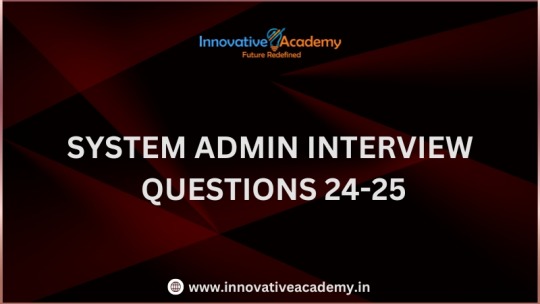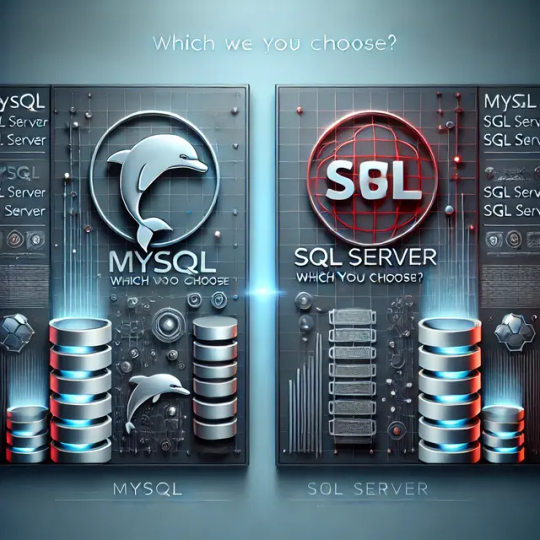#linux interview questions
Explore tagged Tumblr posts
Video
youtube
Viral Linux Interview Questions and Answers | Tech Arkit
* What is SSH-tunnel ? * How to set history size ? * How to extend VG ? * What are logical & extended partitions ? * Explain the steps to reset root password at boot time ?* What are run-levels ? How many types of run levels are there ? * How we change the run level ? * How to check the logs ? * Difference between Journalctl & tail command ? * What does the subscription -manager do ? * How to archive a file ? * What is umask ? * How to kill a process ? * How to assign IP address manually ? * How to assign static IP address to a system ? * Explain the different type s of Linux process states ? * What is a Zombie process ? * What is KVM ? * What is hypervisor ? * Difference between MBR & GPT ? * How you can mount a file system permanently ? * What is cron ? How to setup a cron job ? * What is Kickstart ? * How to create a network bridge in Linux ? * Difference between iptables & firewalld * What is SElinux ? * What is ISCSI & targetcli ? * Difference between NFS & SAMBA ? * What is nfsnobody ? * What is SSHFS ? * What is Kerberos ? * How to secure NFS with Kerberos ? * What is the difference between telnet & SSH ? * What is DHCP ? * What is Kickstart file ? * What is NTP Server ? How to configure NTP ?
0 notes
Note
what's it like studying CS?? im pretty confused if i should choose CS as my major xx
hi there!
first, two "misconceptions" or maybe somewhat surprising things that I think are worth mentioning:
there really isn't that much "math" in the calculus/arithmetic sense*. I mostly remember doing lots of proofs. don't let not being a math wiz stop you from majoring in CS if you like CS
you can get by with surprisingly little programming - yeah you'll have programming assignments, but a degree program will teach you the theory and concepts for the most part (this is where universities will differ on the scale of theory vs. practice, but you'll always get a mix of both and it's important to learn both!)
*: there are some sub-fields where you actually do a Lot of math - machine learning and graphics programming will have you doing a lot of linear algebra, and I'm sure that there are plenty more that I don't remember at the moment. the point is that 1) if you're a bit afraid of math that's fine, you can still thrive in a CS degree but 2) if you love math or are willing to be brave there are a lot of cool things you can do!
I think the best way to get a good sense of what a major is like is to check out a sample degree plan from a university you're considering! here are some of the basic kinds of classes you'd be taking:
basic programming courses: you'll knock these out in your first year - once you know how to code and you have an in-depth understanding of the concepts, you now have a mental framework for the rest of your degree. and also once you learn one programming language, it's pretty easy to pick up another one, and you'll probably work in a handful of different languages throughout your degree.
discrete math/math for computer science courses: more courses that you'll take early on - this is mostly logic and learning to write proofs, and towards the end it just kind of becomes a bunch of semi-related math concepts that are useful in computing & problem solving. oh also I had to take a stats for CS course & a linear algebra course. oh and also calculus but that was mostly a university core requirement thing, I literally never really used it in my CS classes lol
data structures & algorithms: these are the big boys. stacks, queues, linked lists, trees, graphs, sorting algorithms, more complicated algorithms… if you're interviewing for a programming job, they will ask you data structures & algorithms questions. also this is where you learn to write smart, efficient code and solve problems. also this is where you learn which problems are proven to be unsolvable (or at least unsolvable in a reasonable amount of time) so you don't waste your time lol
courses on specific topics: operating systems, Linux/UNIX, circuits, databases, compilers, software engineering/design patterns, automata theory… some of these will be required, and then you'll get to pick some depending on what your interests are! I took cybersecurity-related courses but there really are so many different options!
In general I think CS is a really cool major that you can do a lot with. I realize this was pretty vague, so if you have any more questions feel free to send them my way! also I'm happy to talk more about specific classes/topics or if you just want an answer to "wtf is automata theory" lol
#asks#computer science#thank you for the ask!!! I love talking abt CS and this made me remember which courses I took lol#also side note I went to college at a public college in the US - things could be wildly different elsewhere idk#but these are the basics so I can't imagine other programs varying too widely??
10 notes
·
View notes
Text

Valve has released a 25th anniversary update for Half-Life.
Half-Life is free to own on Steam until November 20, 2023 10AM PT / 1PM ET.
Overview
BRAND NEW INTERVIEWS WITH THE HL1 DEV TEAM!
youtube
We got the band back together to celebrate this anniversary, and we invited the fine people at Secret Tape to film it all happening. Getting together after all this time was the perfect opportunity to revisit the game as it existed in its earliest forms, and to talk about how and why it eventually took shape the way it did. Check out the film to see what it was like to be a part of the team, way back then.
THE 25TH ANNIVERSARY UPDATE FOR HALF-LIFE INCLUDES:
HALF-LIFE UPLINK
Originally released as a CD exclusive for magazines and hardware manufacturers, this mini-campaign was built by the Half-Life team right after the game went gold. As this was many people's first experience with Half-Life, we thought it was finally time to bundle it with the main game—no sound card purchase necessary.


4 NEW MULTIPLAYER MAPS
Built by Valve level designers, these new maps push the limits of what's possible in the Half-Life engine.

CONTAMINATION
Two-foot-thick steel doors block off access to this contaminated waste facility, which has questionable scientific goals at best. Strap on a gluon gun and roast all intruders.

POOL PARTY
Enjoy a relaxing stay at this abandoned Xen outpost built around a cluster of soothing healing pools free-floating in space. How do you breathe here? It doesn't matter!

DISPOSAL
Processing Area 3, a massive radioactive waste plant gone quiet. Tons of room for you and your colleagues to do experiments with a Tau Cannon or some hand grenades.

ROCKET FRENZY
The creaking weight of this decaying orbital satellite launch facility somehow feels familiar… If we could switch on the oxygen lines, power, and fuel, we might just be able to light this candle.
UPDATED GRAPHICS SETTINGS
Play the game the way it looked in 1998, but on a modern monitor.
Widescreen field of view!
Option to disable texture smoothing on the GL renderer!
Lighting fixes including the long-lost GL Overbright support!
Software rendering on Linux! Crisp colors, animated water, and unfiltered textures!
CONTROLLER AND STEAM NETWORKING SUPPORT
A proper gamepad config out of the box!
Added support for Steam Networking! Invite your friends or join games instantly with no fuss.
STEAM DECK SUPPORT!

We finally put our game through our own “Verified” tests, and... we failed super hard. So we fixed it! After re-testing the game, Half-Life gets to officially wear the green checkmark.
Now you can play Half-Life on the best handheld gaming computer in the world in glorious 800p with improved controls and UI.
UI SCALING SUPPORT FOR HIGHER RESOLUTIONS


The entire UI has been reworked to scale at larger screen sizes. We built most of this stuff for 640x480 CRTs and apparently some of you have upgraded since then.
RESTORED CONTENT
We brought back the classic Valve logo video with its iconic music and reskinned the menu to match the 1998 build.

IVAN THE SPACE BIKER AND PROTO-BARNEY

After all this time we finally shipped the original heroes from the alpha builds of Half-Life, available as multiplayer skins!
AS WELL AS THESE RARELY-SEEN EXTRAS!
In 1999, Valve released a CD called Half-Life: Further Data at retail stores, and we're finally including much of that content.
THREE MULTIPLAYER MAPS

Double Cross

Rust Mill

Xen DM
TWO MP PLAYER MODELS

The Half-Life: Further Data CD also included some multiplayer skins made by the original team; we've brought back this incredible skeleton (now with tintable eyes!) and fan-favorite Too Much Coffee Man.
DOZENS OF SPRAYS

While playing a bunch of multiplayer matches we kept wanting more sprays... So we grabbed several megabytes of them from the Further Data release!
BUG FIXES AND CHANGE NOTES
New Content
Now Verified on the Steam Deck (and our native Linux runtime has been set as the default).
Half-Life: Uplink — the original standalone Half-Life demo — has been added to the game, and is accessible through the "New Game" menu.
Added four all-new Half-Life Deathmatch maps: contamination, pool_party, disposal, and rocket_frenzy
Added three old Half-Life Deathmatch maps formerly available only on the "Half-Life: Further Data" CD: doublecross, rust_mill, xen_dm.
Added Ivan the Space Biker, Prototype Barney, Skeleton, and Too Much Coffee Man as player models to Half-Life Deathmatch.
Added dozens of new sprays formerly available only on the "Half-Life: Further Data" CD.
Added support for Steam Networking, allowing easy multiplayer via Steam's Join Game and Invite features.
Added support for Steam Friends Rich Presence, allowing your friends to follow your journey through Black Mesa.
Nostalgia
Brought back the original Valve Intro video. Can be skipped with the "-novid" launch command.
Updated main menu to a design inspired by the game's original 1998 main menu.
Changed the default models to the original (non "HD") models.
Gameplay Changes
Improved physics for throwing grenades.
Improved randomness for initial spawn points in multiplayer.
Improved satchel charge controls: primary fire now always throws a new satchel, and secondary fire always detonates.
Fixed push-able entity movement being based on framerate.
Fixed players with high framerates freezing in place on death in multiplayer.
Fixed some cases where the player could get stuck in place on level transitions.
Fixed some cases where characters would interrupt important dialogue with their "greetings" dialogue.
Fixed weapon view-bob angles.
Fixed red barrels at the start of Surface Tension not launching as intended.
Fixed Snarks attacking FL_WORLDBRUSH entities (such as func_walls).
Fixed players sometimes failing to deploy a snark while crouching and looking down.
Fixed certain convars ("pausable" and "sv_maxspeed") being set to incorrect values when entering a singleplayer game after a multiplayer game.
Fixed singleplayer auto-aim setting being changed when entering a multiplayer game that disallows auto-aim.
Fixed the flashlight HUD showing empty after loading a savegame.
Fixed rockets in CONTENTS_SKY not always detonating.
Fixed incorrect bullet impact sounds for NPCs.
Fixed gauss gun making a loud static noise if it was charged across level transitions.
Fixed a crash in mods that display keybinds in their UI.
Fixed singleplayer weapons not auto-switching away when exhausted (grenades / snarks / satchels / etc)
Fixed interpolation artifacts when animated models are moved by other entities.
Fixed some buffer overflow exploits.
UI Changes
Main-menu background and buttons have been reskinned, and now scale based upon screen resolution without stretching, supporting background image layouts up to 3840x1600.
In-Game HUD now uses double or triple sized sprites when playing at higher resolutions.
UI dialogs and in-game fonts now scale to improve readability at high screen resolutions.
In-Game HUD HEV suit display has been shifted to the left of the screen, and no longer changes position at larger screen resolutions.
Added an "Enable texture filtering" setting.
Added an "Allow widescreen Field of View" setting to correct non-anamorphic FOVs, for widescreen and ultrawide displays.
Re-organized all the Settings screens to improve legibility, and support controller navigation.
Updated the Pause menu to be aware of the current gameplay mode.
The default server name and multiplayer player name are now based on the player's Steam Persona.
The Steam platform menu has been removed, now that all its features are in Steam itself.
Fixed application icon rendering incorrectly when using the software renderer.
Fixed player and spray images not updating their coloring on the settings screen.
Removed the now very unnecessary "Low video quality. Helps with slower video cards." setting.
Input Changes
Improved support for keyboard and controller navigation everywhere.
Added "Lower Input Latency" option: Synchronizes the CPU and GPU to reduce the time between input and display output.
Fixed issues that caused jerky mouse / joystick input.
(We basically rewrote it all - if you've got a custom Steam Input controller configuration, you should rebuild it from our newly published Official Configuration).
Multiplayer Balancing
Increased the 357 damage from 40 → 50.
Hive Hand reload time has been reduced from 0.5s → 0.3s per shot, and it will be selected at higher priority than the pistol on pickup.
MP5 now always starts it with full ammo when picked up.
Players no longer drop empty weapons, and any that are dropped are reloaded by what's in the dying player's backpack.
Improved client-side prediction to reduce "ghost shots". Like Counter-Strike, consider hitboxes and not just bounding boxes for hits on the client.
Fixed network predicted crowbar swing damage being incorrect.
Rendering
Added supported for UI Sprites and Texture files larger than 256x256.
Added support for UI Font special render modes: "blur" and "additive".
Added setting to turn off texture filtering when using the OpenGL renderer.
Default resolution is now based on the resolution of the desktop, instead of a 640x480 window.
Default gamma has been decreased from 2.5 → 2.2, now that we aren't all playing on CRTs.
Software renderer will now correctly filter out incompatible resolutions, unless there is only 1 resolution available on the display.
Restored OpenGL overbright support.
Fixed fullscreen software renderer crashing on systems that don't support 16-bit color.
Fixed software renderer being stretched when using widescreen resolutions.
Fixed skyboxes and sky color incorrectly carrying over when transitioning maps in multiplayer.
Fixed the game appearing too dark after modifying video settings.
Fixed MSAA in windowed mode.
Fixed mipmap rendering on studio models.
Fixed gluon gun sprite rendering in multiplayer.
Fixed gluon gun sinusoidal noise being incorrect.
Various optimizations to support the newly increased engine limits.
OpenGL optimizations for the Steam Deck.
Engine Improvements for Mod Makers
Increased maximum limit of dynamic sound channels from 8 → 32.
Increased maximum limit of sentences in the sentences.txt file from 1536 → 2048.
Increased maximum number of entities (MAX_EDICTS) from 900 → 1200.
Increased MAX_PACKET_ENTITIES increased from 256 → 1024.
Increased MAX_GLTEXTURES from 4800 → 10000.
Increased software renderer geometry limits: max spans 3000 → 6000, max surfaces 2000 → 4000, and max edges 7200 → 14400.
Cycler and func_button entities can now be the entity target for scripted_sentence entities, and are allowed to speak in multiplayer.
Incorporated func_vehicle entity support from Counter-Strike, for mod-makers to use. Full SDK update will come later, but level designers can use it now.
Native Linux Build
Added support for the software renderer.
Improved font rendering.
Many stability and behavior fixes.
Other
Localization files updated.
Miscellaneous security fixes.
Notes
The previous version of the game has been archived to a publicly visible Beta branch named "steam_legacy", with the description "Pre-25th Anniversary Build." If a mod or feature is behaving in an unexpected way, you may need to run this archived build until the issue is resolved in the default build.
We now consider this anniversary version of Half Life to be the definitive version, and the one we'll continue to support going forward. Therefore, we'll be reducing the visibility of Half Life: Source on the Steam Store. We know Half-Life: Source's assets are still being used by the Source engine community, so it'll remain available, but we'll be encouraging new Half-Life players to play this version instead.
WALLPAPERS
Celebrate 25 years of Half-life by decorating your desktop and mobile phone.








33 notes
·
View notes
Text
Paradox Mon - The Past (and Future) in our Present!
The Open Source Tech Festival of Phoebe city was absolutely abuzz with activity this weekend. People have come from around the world, dressed in their finest “nerd” chic. Linux’s iconic Eiscue, Tux, adorns bags, jackets, and banners as attendees make their way from panel to panel.
I have the singular honor of interviewing Professor Montague, one of our region’s foremost experts on Paradox Pokemon. He is a grizzled figure. Far older than one would expect for someone speaking on a phenomenon so recently discovered, but he seems more than comfortable as he sits down to speak with me. After introductions I, of course, begin with the foremost question on everybody’s mind.
Q: “What do Paradox Pokemon have to do with Open Source tech?”
A: “Paradox Pokemon, whether past or future have a lot to teach us. Future Paradox pokemon are the most obvious. They give us a glimpse into what we will achieve in the future. By studying future Paradox mon we can help ourselves along a bit more smoothly, hopefully avoiding whatever pitfalls we might have otherwise run into. While the relevance of past Paradox mon isn’t as clear, it is, I promise, very relevant. The evolution of tool usage greatly parallels our relationships with the world around us, including, perhaps especially, pokemon. Technology is a tool, and tools are technology, so by studying Pokemon from the past, we can hopefully come to a greater understanding of how our own technological evolution took place.”
Q: “Do you mean to say that Pokemon are tools?”
A: “Oh certainly not! Perish the thought! Pokemon are our partners, and therefore our own progress must accommodate for their own unique physiologies. The question is not, how were the pokemon used, so much as, how do the pokemon inform the advancements we have made and will make in the future.”
Q: “Are you concerned about any sort of disruption in the timeline due to these studies?”
A: “Hardly. I think the universe is better at self-correction than we are at fouling it up! Besides which, the Purrloin is already out of the bag, so to speak. It is up to us as scientists to ensure these studies are done as safely and ethically as possible.”
Q: “Do you have a favorite Paradox Pokemon?”
A: “Perhaps a bit unoriginal, but I am quite fond of Iron Treads. It might look a bit menacing, but truthfully they’re actually awfully gentle beasts if given the right enrichment and environment.”
Q: “Do you have any advice for trainers who have, or looking to acquire a Paradox Pokemon of their own?”
A: “Good heavens! I honestly wouldn’t suggest trainers pick up any such pokemon so recently discovered. We still know so little about them! Alas, I suppose many trainers already have managed to get ahold of them.
My advice is, first of all, your local pokemon center will likely not have information specific to your Paradox mon’s physiology. They do have the resources to get answers to those questions, such as we have any, but you may be waiting a bit longer than usual during Center visits.
Second, if your Paradox mon’s temperament seems a bit extreme, try contacting Pokeroid Central. They are a fantastic resource for the creatures, though I for one am still trying to wrap my head around the fact that we can communicate with them at all!
Finally, if you find that you are unable to care for your Paradox mon, it is very VERY important that you do not simply release them! Neither should you leave them at a shelter. We still know so little about these fascinating creatures. Your local shelter may not be equipped to handle them, and releasing them into the wild could have catastrophic consequences for the ecology of your region. Instead, please take them to a Pokemon Center where they have the tools to send them to a facility that will best suit their needs.”
Q: “Thank you so much for your time, Professor. Is there anything else you would like to share with our readers?”
A: “The world is wondrous and her secrets are immeasurable. In the interest of progress we can always use more curious minds to ask questions and study her mysteries. Paradox mon only scratch the surface of what there is to learn, so never stop being curious!”
//idk if @pokeroid-central is still active, but I wanted to give them a shoutout
2 notes
·
View notes
Text

SYSTEM ADMIN INTERVIEW QUESTIONS 24-25
Table of Content
Introduction
File Permissions
User and Group Management:
Cron Jobs
System Performance Monitoring
Package Management (Red Hat)
Conclusion
Introduction
The IT field is vast, and Linux is an important player, especially in cloud computing. This blog is written under the guidance of industry experts to help all tech and non-tech background individuals secure interviews for roles in the IT domain related to Red Hat Linux.
File Permissions
Briefly explain how Linux file permissions work, and how you would change the permissions of a file using chmod. In Linux, each file and directory has three types of permissions: read (r), write (w), and execute (x) for three categories of users: owner, group, and others. Example: You will use chmod 744 filename, where the digits represent the permission in octal (7 = rwx, 4 = r–, etc.) to give full permission to the owner and read-only permission to groups and others.
What is the purpose of the umask command? How is it helpful to control default file permissions?umask sets the default permissions for newly created files and directories by subtracting from the full permissions (777 for directories and 666 for files). Example: If you set the umask to 022, new files will have permissions of 644 (rw-r–r–), and directories will have 755 (rwxr-xr-x).
User and Group Management:
Name the command that adds a new user in Linux and the command responsible for adding a user to a group. The Linux useradd command creates a new user, while the usermod command adds a user to a specific group. Example: Create a user called Jenny by sudo useradd jenny and add him to the developer’s group by sudo usermod—aG developers jenny, where the—aG option adds users to more groups without removing them from other groups.
How do you view the groups that a user belongs to in Linux?
The group command in Linux helps to identify the group a user belongs to and is followed by the username. Example: To check user John’s group: groups john
Cron Jobs
What do you mean by cron jobs, and how is it scheduled to run a script every day at 2 AM?
A cron job is defined in a crontab file. Cron is a Linux utility to schedule tasks to run automatically at specified times. Example: To schedule a script ( /home/user/backup.sh ) to run daily at 2 AM: 0 2 * * * /home/user/backup.sh Where 0 means the minimum hour is 2, every day, every month, every day of the week.
How would you prevent cron job emails from being sent every time the job runs?
By default, cron sends an email with the output of the job. You can prevent this by redirecting the output to /dev/null. Example: To run a script daily at 2 AM and discard its output: 0 2 * * * /home/user/backup.sh > /dev/null 2>&1
System Performance Monitoring
How can you monitor system performance in Linux? Name some tools with their uses.
Some of the tools to monitor the performance are: Top: Live view of system processes and usage of resource htop: More user-friendly when compared to the top with an interactive interface. vmstat: Displays information about processes, memory, paging, block IO, and CPU usage. iostat: Showcases Central Processing Unit (CPU) and I/O statistics for devices and partitions. Example: You can use the top command ( top ) to identify processes consuming too much CPU or memory.
In Linux, how would you check the usage of disk space?
The df command checks disk space usage, and Du is responsible for checking the size of the directory/file. Example: To check overall disk space usage: df -h The -h option depicts the size in a human-readable format like GB, MB, etc.
Package Management (Red Hat)
How do you install, update, or remove packages in Red Hat-based Linux distributions by yum command?
In Red Hat and CentOS systems, the yum package manager is used to install, update, or remove software. Install a package: sudo yum install httpd This installs the Apache web server. Update a package: sudo yum update httpd Remove a package:sudo yum remove httpd
By which command will you check the installation of a package on a Red Hat system?
The yum list installed command is required to check whether the package is installed. Example: To check if httpd (Apache) is installed: yum list installed httpd
Conclusion
The questions are designed by our experienced corporate faculty which will help you to prepare well for various positions that require Linux such as System Admin.
Contact for Course Details – 8447712333
2 notes
·
View notes
Text
DevOps Training Institute in Indore – Your Gateway to Continuous Delivery & Automation
Accelerate Your IT Career with DevOps
In today’s fast-paced IT ecosystem, businesses demand faster deployments, automation, and collaborative workflows. DevOps is the solution—and becoming proficient in this powerful methodology can drastically elevate your career. Enroll at Infograins TCS, the leading DevOps Training Institute in Indore, to gain practical skills in integration, deployment, containerization, and continuous monitoring with real-time tools and cloud technologies.

What You’ll Learn in Our DevOps Course
Our specialized DevOps course in Indore blends development and operations practices to equip students with practical expertise in CI/CD pipelines, Jenkins, Docker, Kubernetes, Ansible, Git, AWS, and monitoring tools like Nagios and Prometheus. The course is crafted by industry experts to ensure learners gain a hands-on understanding of real-world DevOps applications in cloud-based environments.
Key Benefits – Why Our DevOps Training Stands Out
At Infograins TCS, our DevOps training in Indore offers learners several advantages:
In-depth coverage of popular DevOps tools and practices.
Hands-on projects on automation and cloud deployment.
Industry-aligned curriculum updated with the latest trends.
Internship and job assistance for eligible students. This ensures you not only gain certification but walk away with project experience that matters in the real world.
Why Choose Us – A Trusted DevOps Training Institute in Indore
Infograins TCS has earned its reputation as a reliable DevOps Training Institute in Indore through consistent quality and commitment to excellence. Here’s what sets us apart:
Professional instructors with real-world DevOps experience.
100% practical learning through case studies and real deployments.
Personalized mentoring and career guidance.
Structured learning paths tailored for both beginners and professionals. Our focus is on delivering value that goes beyond traditional classroom learning.
Certification Programs at Infograins TCS
We provide industry-recognized certifications that validate your knowledge and practical skills in DevOps. This credential is a powerful tool for standing out in job applications and interviews. After completing the DevOps course in Indore, students receive a certificate that reflects their readiness for technical roles in the IT industry.
After Certification – What Comes Next?
Once certified, students can pursue DevOps-related roles such as DevOps Engineer, Release Manager, Automation Engineer, and Site Reliability Engineer. We also help students land internships and jobs through our strong network of hiring partners, real-time project exposure, and personalized support. Our DevOps training in Indore ensures you’re truly job-ready.
Explore Our More Courses – Build a Broader Skill Set
Alongside our flagship DevOps course, Infograins TCS also offers:
Cloud Computing with AWS
Python Programming & Automation
Software Testing – Manual & Automation
Full Stack Web Development
Data Science and Machine Learning These programs complement DevOps skills and open additional career opportunities in tech.
Why We Are the Right Learning Partner
At Infograins TCS, we don’t just train—we mentor, guide, and prepare you for a successful IT journey. Our career-centric approach, live-project integration, and collaborative learning environment make us the ideal destination for DevOps training in Indore. When you partner with us, you’re not just learning tools—you’re building a future.
FAQs – Frequently Asked Questions
1. Who can enroll in the DevOps course? Anyone with a basic understanding of Linux, networking, or software development can join. This course is ideal for freshers, IT professionals, and system administrators.
2. Will I get certified after completing the course? Yes, upon successful completion of the training and evaluation, you’ll receive an industry-recognized certification from Infograins TCS.
3. Is this DevOps course available in both online and offline modes? Yes, we offer both classroom and online training options to suit your schedule and convenience.
4. Do you offer placement assistance? Absolutely! We provide career guidance, interview preparation, and job/internship opportunities through our dedicated placement cell.
5. What tools will I learn in this DevOps course? You will gain hands-on experience with tools such as Jenkins, Docker, Kubernetes, Ansible, Git, AWS, and monitoring tools like Nagios and Prometheus.
Join the Best DevOps Training Institute in Indore
If you're serious about launching or advancing your career in DevOps, there’s no better place than Infograins TCS – your trusted DevOps Training Institute in Indore. With our project-based learning, expert guidance, and certification support, you're well on your way to becoming a DevOps professional in high demand.
0 notes
Text
Transform Your Career with TechnoScripts’
Embedded Systems Training in Pune
Embedded systems are the backbone of upcoming modern technology, quietly running everything from your smartphone to the navigation system in your car. As industries like IoT, automotive, & healthcare expand, companies are seeking for engineers who can design, program, & troubleshoot these critical systems. But landing a role in this field or advancing in it needs a lot more knowledge. You need to stand out in interviews, build a strong online presence, and show employers you’re ready for real-world challenges. That’s where TechnoScripts, a leading embedded systems training institute in Pune, steps in. Their four-month Advance Career Track in Embedded Systems is built to equip both fresh graduates and seasoned professionals with the skills and tools to succeed. Here’s a look at the nine key features that make this program a standout: mock interviews, LinkedIn profile optimization, ATS-friendly resume crafting, 100% placement assistance, internship opportunities, flexible learning options, hands-on projects, professional profile building, and mentorship from industry veterans.
Why Choose Embedded Systems as a career?
Embedded systems make various technologies possible, & as innovation surges, so does the need for skilled engineers and Technoscripts is fulfilling that demand. In 2025, employers are finding talent who can tackle tasks like programming microcontrollers & integrating IoT solutions. But to get hired, you need to shine in 1000s of candidates. TechnoScripts’ program doesn’t just teach you the technical stuff it prepares you to navigate the job market with confidence.
Nine Features That Set TechnoScripts Apart
Mock Interviews: Sharpen Your Skills Job interviews for embedded systems roles can be intense, with questions ranging from embedded C coding to real-time operating systems. TechnoScripts offers mock interviews led by industry pros who’ve been on both sides of the table. These sessions feel like the real thing, covering technical challenges and HR-style questions. You’ll get feedback on how to explain your projects better or come across more confidently—think of it as a dress rehearsal for your dream job.
LinkedIn Optimization: Get Noticed Online Your LinkedIn profile is the 1st thing recruiters see. TechnoScripts helps you make it very sharp & professional, with a headline that gets attention (like “Embedded Systems Engineer Focused on IoT Innovation”) & a summary that tells your unique story & Skillset. You’ll learn to highlight skills like sensor integration or ARM programming and share project updates to build credibility. They even offer tips on connecting with industry folks, so your profile works for you 24/7.
ATS-Friendly Resumes: Pass the Digital Gatekeepers Ever sent out a resume and heard nothing back? Chances are, an Applicant Tracking System (ATS) filtered it out. TechnoScripts shows you how to create a resume that beats these systems by weaving in keywords like “embedded Linux” or “microcontroller design” naturally. They’ll guide you on structuring your experience to showcase projects and certifications clearly, ensuring your resume lands in front of a hiring manager.
100% Placement Assistance: Your Path to a Job TechnoScripts doesn’t just train you—they help you cross the finish line. Their placement team works tirelessly to connect you with top companies in the embedded systems space. From fine-tuning your resume to arranging campus recruitment drives, they’re your partner in the job hunt, giving you access to opportunities that match your skills and goals in Embedded Systems Course in Pune with Placement.
Internship Opportunities & the Real-World Experience Nothing impresses employers like hands-on experience. TechnoScripts provides internship letters that open doors to roles where you might code IoT software or debug hardware systems. These internships let you apply what you’ve learned and give you stories to share in interviews—like the time you fixed a tricky sensor issue. That kind of experience makes your resume pop.
Flexible Learning Options: Fit Training Into Your Life Whether you’re a student or a working professional, TechnoScripts makes learning accessible. You can attend in-person classes at their Pune facility, where you’ll work with real hardware and collaborate with peers, or opt for online sessions that are just as engaging. With early morning, evening, and weekend batches, you can balance training with your busy schedule.
Hands-On Projects: Build What Matters This program is all about doing. You’ll work on at least two live projects, like creating an IoT device or programming a microcontroller to manage sensors. These projects mirror real job tasks, teaching you how to solve problems under pressure. Plus, they give you something concrete to show employers, proving you can handle the challenges they care about.
Professional Profile Building: Stand Out in the Crowd In a competitive market, a polished professional profile can set you apart. TechnoScripts helps you craft one that highlights your skills, projects, and the certificate you’ll earn. They’ll coach you on presenting your work—like a project where you integrated a sensor array—in a way that catches employers’ eyes, making you a top candidate.
Mentorship from Industry Experts: Learn from the Best The instructors at TechnoScripts aren’t just teachers—they’ve built real products and solved real problems in the embedded systems world. They’ll guide you through complex topics like embedded C or IoT protocols, sharing insights you won’t find in textbooks. Their mentorship prepares you for the realities of the job, not just the theory.
Why TechnoScripts Stands Out
The Embedded Course in Pune covers 12 modules, from digital electronics to advanced IoT and embedded Linux, all taught through hands-on practice. With flexible training, real-world projects, and a strong placement record, TechnoScripts ensures you’re ready for the industry. Their mentors, who’ve worked on cutting-edge systems, bring practical knowledge that bridges the gap between learning and doing.
How to Get Started
Ready to jump in? Visit TechnoScripts’ website or reach out to their admissions team for details on batches, fees, and enrollment. They offer regular and fast-track options, plus schedules tailored for working professionals, so you can find what works for you.
Final Thoughts
The embedded systems industry is brimming with opportunity, but breaking in requires the right preparation. TechnoScripts’ Embedded Systems Course in Pune delivers the technical skills and career tools you need—from mock interviews to hands-on projects and expert mentorship. Enroll now to start building a career that makes an impact in this fast-growing field.
0 notes
Text
Hadoop is the most used opensource big data platform. Over the last decade, it has become a very large ecosystem with dozens of tools and projects supporting it. Most information technology companies have invested in Hadoop based data analytics and this has created a huge job market for Hadoop engineers and analysts. Hadoop is a large-scale system that requires Map Reduce programmers, data scientists, and administrators to maintain it. Getting a Hadoop job may seem difficult but not impossible. There are hundreds of useful free resources available online that can help you learn it on your own. Many programmers have switched to data scientist role by simply self-learning Hadoop development. I am a Cloudera certified Hadoop developer since 2008 and I have hand-curated this list of resources for all Hadoop aspirants to learn faster. Hadoop Beginners Tutorials: Simple and Easy to Follow Hadoop requires a lot of prior knowledge of computer science. It may be overwhelming for a total beginner to start using it. I would recommend to take small steps and learn part of it at a time. Try to apply what you learn using a simple project. The pre-bundled distributions of Hadoop are, the best way to avoid complicated setup. You can use Cloudera or Hortonworks bundled packages to quick start your experiments. At first, you need no create a large Hadoop cluster. Even doing a one or two node cluster would be sufficient to verify your learnings. Apache Hadoop - Tutorial 24 Hadoop Interview Questions & Answers for MapReduce developers | FromDev Hadoop Tutorial - YDN Hadoop Tutorial for Beginners: Hadoop Basics Hadoop Tutorial – Learn Hadoop from experts – Intellipaat Free Hadoop Tutorial: Master BigData Hadoop Tutorial Apache Hadoop 2.9.2 – MapReduce Tutorial Learn Hadoop Tutorial - javatpoint Hadoop Tutorial | Getting Started With Big Data And Hadoop | Edureka Hadoop Tutorial for Beginners | Learn Hadoop from A to Z - DataFlair Map Reduce - A really simple introduction « Kaushik Sathupadi Running Hadoop On Ubuntu Linux (Single-Node Cluster) Learn Hadoop Online for Free with Big Data and Map Reduce Cloudera Essentials for Apache Hadoop | Cloudera OnDemand Hadoop Video Tutorials To Watch and Learn Video tutorials are also available for learning Hadoop. There are dozens of beginners video tutorials on Youtube and other websites. Some of the most popular ones are listed below. Hadoop Tutorials Beginners - YouTube Apache Hadoop Tutorial | Hadoop Tutorial For Beginners | Big Data Hadoop | Hadoop Training | Edureka - YouTube Big Data Hadoop Tutorial Videos - YouTube Demystifying Hadoop 2.0 - Playlist Full - YouTube Hadoop Architecture Tutorials Playlist - YouTube Hadoop Tutorials - YouTube Durga Hadoop - YouTube Big Data & Hadoop Tutorials - YouTube Hadoop Tutorials for Beginners - YouTube Big Data and Hadoop Tutorials - YouTube Big Data Hadoop Tutorial Videos | Simplilearn - YouTube Hadoop Training Tutorials - Big Data, Hadoop Big Data,Hadoop Tutorials for Beginners - YouTube Hadoop Training and Tutorials - YouTube Hadoop Tutorials - YouTube Best Hadoop eBooks and PDF to Learn Looking for a PDF downloadable for Hadoop learning? Below list has plenty of options for you from various sources on the internet. Apache Hadoop Tutorial Mapreduce Osdi04 Book Mapreduce Book Final Hadoop The Definitive Guide Hadoop Mapreduce Cookbook Bigdata Hadoop Tutorial Hadoop Books Hadoop In Practice Hadoop Illuminated Hdfs Design Hadoop Real World Solutions Cookbook Hadoop Explained Hadoop With Python Apache Hadoop Tutorial Best Free Mongodb Tutorials Pdf Hadoop Cheatsheets and Quick Reference Resources Hadoop has many commands, memorizing those may take time. You can use a simple cheat sheet that can be used as a quick reference. I recommend you to print one of your favorite cheat sheets and stick it on your desk pinboard. This way you can easily lookup for commands as you work.
Commands Manual Hadoop Hdfs Commands Cheatsheet Hadoop For Dummies Cheat Sheet - dummies Hadoop Deployment Cheat Sheet | Jethro Hdfs Cheatsheet HDFS Cheat Sheet - DZone Big Data Big Data Hadoop Cheat Sheet - Intellipaat Hadoop Websites and Blogs To Learn On Web This is a list of blogs and websites related to Hadoop. These can be handy to keep your knowledge on Hadoop up to date with the latest industry trends. Hadoop Eco System - Hadoop Online Tutorials Big Data Hadoop Tutorial for Beginners- Hadoop Installation,Free Hadoop Online Tutorial Hadoop Tutorial – Getting Started with HDP - Hortonworks Hortonworks Sandbox Tutorials for Apache Hadoop | Hortonworks Hadoop – An Apache Hadoop Tutorials for Beginners - TechVidvan Hadoop Tutorial -- with HDFS, HBase, MapReduce, Oozie, Hive, and Pig Free Online Video Tutorials, Online Hadoop Tutorials, HDFS Video Tutorials | hadooptutorials.co.in Free Hadoop Training Hadoop Fundamentals - Cognitive Class Hadoop Courses | Coursera hadoop Courses | edX MapR Training Options | MapR Hadoop Forums and Discussion Boards To Get Help Looking for help related to Hadoop, you may be lucky if you go online. Many people are willing to help with Hadoop related queries. Below forums are very active with high participation from hundreds of people. Official Apache Hadoop Mailing list Frequent 'Hadoop' Questions - Stack Overflow Forums - Hadoop Forum Hadoop Courses and Training (Including Paid Options) Hadoop courses may not be free but have been proven very useful for quickly learning from experts. The courses can exhaustive, however, it may give you a faster learning curve and greater confidence. There are many costly courses available, my recommendation will be to try out the free courses first and then invest wisely into areas where you need to learn more. Apache Hadoop training from Cloudera University - Following are the key things to notice about this training. Expert trainers Good place for networking for fellow Hadoop engineers. Usually in-person training. It may be costly as an individual, but if you get corporate sponsorship this is probably the best option. This is the Most popular choice for corporate training. Live Training - Hortonworks - Following are the key things to notice about this training. Another good option for corporate level training. Expert trainers. Usually in-person training. It may be costly. Big Data Training - Education Services - US and Canada | HPE™ Big Data Hadoop Training | Hadoop Certification Online Course - Simplilearn Hadoop Tutorial Training Certification - Paid but a cheaper option. Search for ProTech Courses - Hadoop courses are offered at a physical training. TecheTraining Learning Hadoop - Hadoop Training Course on LinkedIn that can be free with a one month trial. Please share your experience If you know about more training options or have any feedback about any training listed here. Summary I have created this huge list of Hadoop tutorials to help learn faster. At first, it may become overwhelming to jump onto any tutorial and start learning, however, I would encourage you to no give up on learning. My recommendation to beginners will be to start small and no give up. Based on the couple hour spent every day you may be able to learn Hadoop ecosystem in a matter of a few weeks. I hope you find this resource page useful. Please mention in comments, If you find something useful that is not listed on this page.
0 notes
Text
How to Hire a Linux Kernel Developer: Skills, Experience & Interview Questions

Linux powers everything from web servers to embedded devices, and its core lies at Linux Kernel - a crucial layer that demands deep expertise for modification, maintenance, and optimization. For tech companies that are building high-performance systems, device drivers, or custom operating environments the decision to hire software developers proficient in Linux Kernel can be a strategic move.
But kernel development is a niche skill and to hire the right developer requires you to know what to look for and to ask the right questions. In this article, we will cover how you can do it.
Finding the Right Low-Level Expert for High-Performance Systems
Kernel engineers bridge the gap between user-level apps and hardware by working at the lowest software layer. Frequently, when hiring Linux kernel developers, you often want to:
Patch or modify the kernel to work with particular hardware.
Create or troubleshoot device drivers.
Boost system efficiency or lower delay.
Assure mission-critical systems' security and stability.
This isn't how applications are usually developed. It calls for a solid understanding of memory management, operating systems, and the nuances of C programming.
Key Skills to Look For
Give these crucial areas top priority while vetting applicants:
Proficiency in C: Since C is used for nearly all kernel development, in-depth expertise is non negotiable.
Kernel module experience: Applicants should be able to write, compile, and load kernel modules.
Tools for Debugging and Profiling: It's crucial to be familiar with programs like gdb, perf, and ftrace.
Knowledge of OS Internals: Key ideas include scheduling, memory management, and I/O systems.
Version Control & Patch Submissions: It is highly advantageous to contribute to open-source projects or the mainline Linux kernel.
A candidate's ability to communicate effectively across time zones and accurately document their work is also essential if you're looking to hire remote developers.
Where to Find Talent
Using conventional methods to hire Linux kernel developers isn't always simple. These engineers frequently contribute to specialized communities like Git repositories and kernel mailing groups, or they work on open-source projects.
Some tech companies decide to collaborate with organizations that focus on low-level software development or embedded technologies. Others seek to hire programmers who possess a solid foundation in C and OS, then train them in kernel-specific techniques.
Interview Questions to Ask
After you've found a good applicant, probe further with focused questions:
What distinguishes user space from kernel space?
How would a production system's kernel panic be debugged?
Could you describe the Linux kernel's memory allocation mechanism?
Have you submitted bug fixes or patches to the mainline kernel?
How are dependencies between kernel modules managed?
What function does the Linux kernel's scheduler serve?
Asking them to describe a recent kernel-related project, including its objectives, tools, and methods for testing and validating their work, is another option.
Summing Up
You must know exactly what your system needs and what kernel experience will provide it in order to hire Linux kernel engineers. The correct hire adds dependability, speed, and profound technical understanding to everything from driver creation to system optimization.
These developers are essential to tech companies creating scalable and secure infrastructure. Whether you're looking to hire remote developers or in-house developers, a careful, skills-based strategy can help you find the best fit.
0 notes
Text
Linux Technical Interview Questions and Answers: Prepare Like a Pro
Master the most commonly asked Linux interview questions with this comprehensive course. Gain deep insights into system administration, file management, security, and more. With detailed answers and expert tips, you'll be prepared to ace your Linux technical interviews and land the job.
0 notes
Text
Linux training and certification
Whether you are aiming to emerge as a Linux System Administrator, a DevOps engineer, or just need to strengthen your resume, our certification adds actual value. Plus, our trainers guide you through certification prep, help with interview questions, or even aid process placement assistance after the course.
Web :
0 notes
Text
Agent of Veil Offers Unique Gaming Experience

Agent of Veil 3D puzzle adventure game is due to evolve onto Linux with Windows PC. Thanks to the creative minds at Hellion Red, this title brings something totally fresh and unexpected. Due to make its way onto Steam. Get ready, gamers — there’s a new indie title sneaking onto Steam, and it’s not your usual 3D stealth shooter adventure or puzzle platformer. It’s called Agent of Veil, and it’s got everything: spy drama, weird puzzles, mysterious coworkers, and yes… passive-aggressive office notes.
I am a big fan of open source software and am developing Agent of Veil with the porting to Linux in mind. I will focus on testing the game on multiple platforms.
Hellion Red shared in an email that they haven’t tested a Linux build yet, which is why it isn’t listed on the Steam page for now. But here’s the good news — they’re currently focusing on getting the demo ready, and once that’s complete, they plan to start testing the title on multiple platforms, including Linux. So hang tight — more platform support is due to be on the way soon. Made by indie studio Hellion Red, Agent of Veil throws you into a spy interview unlike anything you’ve ever seen. You play as a potential recruit for a super-secret agency called VEIL. Sounds great already, right? But this isn't just about sneaking around and defusing bombs — your first mission is surviving the world’s strangest job interview.
Agent of Veil Official Announcement Trailer
youtube
You’ll have a guide (and maybe judgement) by Ghost, VEIL’s digital assistant with a sharp tongue and a lot of secrets. Ghost will ask you strange interview questions, challenge you with brain-bending puzzles, and maybe help you—if you don’t annoy them too much. This title is all about solving clever puzzles—classic spy stuff like ciphers and codes, mixed with more off-the-wall challenges. Each puzzle you crack gets you deeper into the weird world of VEIL, where not everything is as it seems. And yes, there will be mysterious files, hidden rooms, and secret messages to decode. Expect your brain to stretch in the best way possible in Agent of Veil. But here’s the twist: your new workplace is just as puzzling as the missions themselves. There’s gossip, drama, strange notes left on desks, and some shady stuff happening behind the scenes. Who’s stealing lunches? Who left that encrypted message on the printer? And why is everyone acting so suspicious? It’s like The Office meets James Bond, with a dash of puzzle madness thrown in. So, if you like games that make you think, laugh, and ask “Wait, what just happened?” — Agent of Veil should be on your radar. This is more than just a spy title. It’s a mind game wrapped in mystery, served with a side of satire. Agent of Veil 3D puzzle adventure is coming soon to Steam. So don’t forget to hit that wishlist button and get ready to join the weirdest spy agency ever.
0 notes
Text
SRE (Site Reliability Engineering) Interview Preparation Guide
Site Reliability Engineering (SRE) is a highly sought-after role that blends software engineering with systems administration to create scalable, reliable systems. Whether you’re a seasoned professional or just starting out, preparing for an SRE interview requires a strategic approach. Here’s a guide to help you ace your interview.
1. Understand the Role of an SRE
Before diving into preparation, it’s crucial to understand the responsibilities of an SRE. SREs focus on maintaining the reliability, availability, and performance of systems. Their tasks include:
• Monitoring and incident response
• Automation of manual tasks
• Capacity planning
• Performance tuning
• Collaborating with development teams to improve system architecture
2. Key Areas to Prepare
SRE interviews typically cover a range of topics. Here are the main areas you should focus on:
a) System Design
• Learn how to design scalable and fault-tolerant systems.
• Understand concepts like load balancing, caching, database sharding, and high availability.
• Be prepared to discuss trade-offs in system architecture.
b) Programming and Scripting
• Proficiency in at least one programming language (e.g., Python, Go, Java) is essential.
• Practice writing scripts for automation tasks like log parsing or monitoring setup.
• Focus on problem-solving skills and algorithms.
c) Linux/Unix Fundamentals
• Understand Linux commands, file systems, and process management.
• Learn about networking concepts such as DNS, TCP/IP, and firewalls.
d) Monitoring and Observability
• Familiarize yourself with tools like Prometheus, Grafana, ELK stack, and Datadog.
• Understand key metrics (e.g., latency, traffic, errors) and Service Level Objectives (SLOs).
e) Incident Management
• Study strategies for diagnosing and mitigating production issues.
• Be ready to explain root cause analysis and postmortem processes.
f) Cloud and Kubernetes
• Understand cloud platforms like AWS, Azure, or GCP.
• Learn Kubernetes concepts such as pods, deployments, and service meshes.
• Explore Infrastructure as Code (IaC) tools like Terraform.
3. Soft Skills and Behavioral Questions
SREs often collaborate with cross-functional teams. Be prepared for questions about:
• Handling high-pressure incidents
• Balancing reliability with feature delivery
• Communication and teamwork skills
Read More: SRE (Site Reliability Engineering) Interview Preparation Guide
0 notes
Text
MySQL vs SQL Server: Which One Should You Choose?
Databases are the backbone of every application, from simple websites to enterprise-level systems. When it comes to choosing the right database management system (DBMS), two names often come up: MySQL and SQL Server. Both are widely used, but they cater to different needs and have unique strengths.

For students and professionals preparing for roles in database management, understanding the differences between these two DBMS options is crucial. Whether you're tackling MySQL interview questions for a web development role or diving into complex SQL Server interview questions for enterprise applications, this comparison will help you build a solid foundation.
This guide explores the key features, differences, and use cases of MySQL and SQL Server, helping you make the best choice for your career or project.
Read More: DBMS vs RDBMS: Which One Should You Learn for a Successful Database Career?
2. Overview of MySQL and SQL Server
To start, let’s understand what makes these two DBMS solutions so popular:
What is MySQL? MySQL is an open-source relational database management system (RDBMS) widely used in web development. It’s a part of the LAMP stack (Linux, Apache, MySQL, PHP/Python/Perl) and powers popular platforms like WordPress, Drupal, and Joomla. Its simplicity, speed, and flexibility make it an excellent choice for startups and small-scale projects.
What is SQL Server? SQL Server, developed by Microsoft, is a commercial RDBMS designed for enterprise-level applications. It integrates seamlessly with the Microsoft ecosystem, including Azure and .NET, and offers robust features for security, analytics, and transaction management. It’s ideal for handling complex and large-scale database requirements.
Here’s a quick comparison table for a high-level view:FeatureMySQLSQL ServerLicenseOpen-source (free)Commercial (free versions available)PlatformCross-platformWindows (also Linux support)PopularityWeb apps, CMS platformsEnterprise applications
3. Key Differences Between MySQL and SQL Server
While both are relational database systems, their differences can influence your decision significantly. Let’s explore the critical areas:
3.1 Licensing and Cost
MySQL: Being open-source, MySQL is free to use. It also offers enterprise editions with additional features and support, but the free version is sufficient for most small to medium-scale projects.
SQL Server: SQL Server operates on a commercial license model, which can be expensive for large deployments. However, Microsoft provides free versions like SQL Server Express and Developer Edition for students and small-scale use.
3.2 Platform Support
MySQL: MySQL is known for its flexibility and runs seamlessly on various platforms, including Windows, Linux, and macOS.
SQL Server: Traditionally optimized for Windows, SQL Server now supports Linux, giving it broader appeal for enterprise use.
3.3 Performance and Scalability
MySQL: Known for its performance in read-heavy workloads like blogs and content management systems. However, it may require additional tuning for high transaction volumes.
SQL Server: Outshines MySQL in write-heavy workloads and large-scale transactional systems, making it a preferred choice for enterprises managing massive data volumes.
3.4 Security Features
SQL Server: Offers advanced security measures like transparent data encryption, Always Encrypted, and row-level security, making it ideal for sensitive data applications.
MySQL: Provides basic security features and depends on third-party tools for advanced options.
3.5 Community and Support
MySQL: Backed by a strong open-source community, with plenty of free resources, tutorials, and forums available for support.
SQL Server: Offers professional, enterprise-grade support from Microsoft, along with extensive documentation and training options.
4. Features Comparison
Let’s break down the core features of MySQL and SQL Server to understand their strengths and limitations:
4.1 Data Types and Indexing
MySQL: Offers a basic but effective range of data types. It supports indexing, which boosts query performance, but lacks some advanced data types like XML and JSON indexing.
SQL Server: Provides a more extensive set of data types, including XML, JSON, and Spatial data. Advanced indexing techniques like filtered indexes enhance query performance significantly.
4.2 Stored Procedures and Functions
MySQL: Supports stored procedures and triggers but is less feature-rich compared to SQL Server.
SQL Server: Offers powerful stored procedures, triggers, and functions through T-SQL, enabling complex operations directly within the database.
4.3 Tools and Ecosystem
MySQL: Features lightweight tools like MySQL Workbench, which are simple and effective for smaller projects.
SQL Server: Comes with advanced tools like SQL Server Management Studio (SSMS), offering extensive capabilities for managing large databases, monitoring, and optimizing performance.
4.4 Integration with Other Platforms
MySQL: Works well with open-source stacks like LAMP and platforms such as WordPress and Joomla.
SQL Server: Integrates seamlessly with Microsoft technologies like Azure, .NET, and Power BI, making it ideal for enterprise-level solutions.
5. Use Cases for MySQL
MySQL is perfect for smaller-scale projects and web applications where performance and cost-effectiveness are priorities. Key use cases include:
Web Applications and CMS
Popular platforms like WordPress, Drupal, and Joomla run on MySQL. It’s ideal for blogs, e-commerce sites, and forums.
Startups and Small Businesses
MySQL’s low cost and ease of use make it a go-to choice for startups needing a reliable database for lightweight applications.
Data Warehousing for Small-Scale Projects
While not as robust as SQL Server for large-scale data warehousing, MySQL works well for small to medium-sized datasets.
6. Use Cases for SQL Server
SQL Server is built for enterprises requiring robust performance, scalability, and advanced analytics. Key use cases include:
Enterprise Applications
SQL Server excels in managing high transaction volumes and complex business logic, making it suitable for ERP and CRM systems.
Business Intelligence and Reporting
With tools like SQL Server Reporting Services (SSRS) and Power BI integration, it’s perfect for creating detailed reports and dashboards.
Cloud-Based Solutions
SQL Server integrates seamlessly with Microsoft Azure, enabling scalable and secure cloud-based applications.
High-Security Applications
Advanced security features make SQL Server the preferred choice for industries like banking and healthcare that handle sensitive data.
7. Factors to Consider When Choosing Between MySQL and SQL Server
When deciding which database to use, consider the following factors:
7.1 Budget Constraints
If you’re working with a limited budget, MySQL’s free open-source version is a great option. SQL Server, while powerful, can be costly for large-scale deployments unless you opt for the free Express or Developer editions.
7.2 Application Requirements
Read-Heavy Applications: MySQL is often better for read-heavy workloads like blogs or content platforms.
Transaction-Intensive Applications: SQL Server is ideal for write-heavy, high-transaction environments like banking or enterprise solutions.
7.3 Development Ecosystem
If your project leverages open-source tools and frameworks, MySQL is a natural fit. For those already invested in the Microsoft ecosystem, SQL Server offers unparalleled integration and compatibility.
7.4 Scalability and Performance Needs
Consider the future growth of your application. SQL Server is designed for enterprise scalability, while MySQL may require additional tools and configurations to handle massive datasets.
0 notes
Text
Comprehensive Guide to Technical Support Jobs in the UK
In today’s digital age, Technical Support Jobs UK are more vital than ever. Whether you're a tech-savvy professional looking to advance your career or someone eager to step into the IT industry, the UK offers an abundance of opportunities. This article provides an in-depth look into technical support roles, how to secure them, and why they are a rewarding career choice.
What Are Technical Support Jobs?
Technical Support Jobs UK involve assisting individuals or businesses in resolving technical issues related to software, hardware, or network systems. Professionals in this field provide troubleshooting services, ensure seamless technology usage, and maintain IT systems' functionality.
Key Responsibilities:
Diagnosing and resolving hardware and software issues.
Assisting clients with IT-related queries via phone, email, or chat.
Installing and configuring software and hardware systems.
Monitoring IT systems to prevent potential issues.
Documenting technical issues and solutions.
Types of Technical Support Jobs in the UK
1. Helpdesk Support
Entry-level positions handling basic queries.
Involves guiding users through simple troubleshooting steps.
Skills required: strong communication and customer service.
2. IT Support Technician
Intermediate role focusing on system setups and diagnostics.
Offers on-site or remote support.
Skills required: IT certifications (e.g., CompTIA, Microsoft Certified Professional).
3. Network Support Specialist
Advanced role specializing in network infrastructure.
Includes managing routers, firewalls, and network security.
Skills required: Networking expertise and certifications (e.g., CCNA, CCNP).
4. Software Support Engineer
Focuses on resolving issues in specific software applications.
Works closely with developers to troubleshoot and debug.
Skills required: Knowledge of programming and software tools.
Qualifications Needed for Technical Support Jobs
Educational Background:
A degree in Computer Science, IT, or related fields is advantageous.
Vocational training or certifications can substitute for formal education.
Certifications:
CompTIA A+, Network+, or Security+.
Microsoft Certified: Azure Fundamentals.
ITIL Foundation for IT service management.
Skills:
Strong problem-solving abilities.
Excellent communication and interpersonal skills.
Familiarity with IT systems and platforms (e.g., Windows, Linux, MacOS).
Benefits of Pursuing a Career in Technical Support
Diverse Opportunities With technology integrated into every sector, technical support roles are in demand across industries such as healthcare, finance, and retail.
Career Growth Starting as a technician can lead to roles like IT manager or systems administrator.
Competitive Salary The average salary for a Technical Support Jobs UK ranges from £20,000 to £40,000 per year, depending on experience and specialization.
Skill Development Working in technical support offers continual learning through exposure to new technologies.
How to Secure Technical Support Jobs in the UK
1. Create a Targeted Resume
Highlight relevant technical skills and experience.
Include certifications and software proficiencies.
2. Build a Professional Network
Leverage platforms like LinkedIn to connect with IT professionals.
Attend job fairs and IT networking events.
3. Apply Strategically
Use job portals like Indeed, Glassdoor, and specialist IT recruitment agencies.
Focus on entry-level roles if you're new to the field.
4. Ace the Interview
Demonstrate problem-solving skills through scenario-based questions.
Showcase your passion for technology and commitment to customer service.
Challenges in Technical Support Jobs and How to Overcome Them
Challenge 1: High Workload
Solution: Prioritize tasks using IT service management tools like Jira or Zendesk.
Challenge 2: Difficult Customers
Solution: Develop strong communication skills and maintain a calm demeanor.
Challenge 3: Keeping Up with Technology
Solution: Stay updated with certifications and industry training.
Job Trends in Technical Support in the UK
The demand for technical support roles continues to rise due to:
Increased reliance on remote work solutions.
Expansion of cloud-based systems.
Growing cybersecurity concerns.
Future Prospects:
Technical support professionals are transitioning to roles involving AI tools, data analytics, and automation, ensuring long-term career stability.
0 notes
Text
How to Develop a Web App – A Detailed Guide by KSoft Technologies
November 24, 2024
How to Develop a Web App – A Detailed Guide by KSoft Technologies: Discover the essentials of web application development, from planning and design to deployment and maintenance, with expert tips from KSoft Technologies.
Developing a web application is an exciting journey, merging creativity, technical skills, and strategic planning. At KSoft Technologies, we specialize in turning ideas into reality, guiding businesses through this process to create applications that align with their goals and captivate their target audience. In this blog, we’ll walk you through the step-by-step process of web application development, infused with industry best practices and actionable insights.
What Is a Web Application?
A web application is an interactive software platform accessible through web browsers. Unlike static websites, web apps deliver dynamic functionalities like user authentication, data management, and real-time interactions. They empower businesses to enhance engagement, optimize processes, and deliver seamless digital experiences.
Examples of web applications include:
E-commerce Platforms: Amazon, Shopify
Social Media Platforms: Facebook, LinkedIn
CRM Tools: Salesforce
Learning Management Systems (LMS): Moodle, Coursera
Whether you're crafting a simple Minimum Viable Product (MVP) or a robust enterprise application, a systematic approach is key to success.
The Web Application Development Process 🚀
Creating a web application involves several well-defined stages. Here's how we approach it at KSoft Technologies:
1. Requirement Gathering and Analysis 🧐
Every project starts with a deep dive into your objectives. We collaborate with stakeholders to answer key questions:
Who is your target audience?
What business challenges will the app solve?
What features are essential?
Through brainstorming, interviews, and research, we craft a detailed roadmap for success.
2. Planning and Strategy 📝
With requirements in hand, we create a solid plan, including:
Wireframes: Blueprints of the app’s layout.
Sitemaps: A structured overview of pages and features.
Technology Stack Selection: Choosing frameworks like:
MEAN: MongoDB, Express.js, Angular, Node.js
MERN: MongoDB, Express.js, React, Node.js
LAMP: Linux, Apache, MySQL, PHP
3. Design and User Experience (UX) 🎨
Design plays a pivotal role in app usability. Our approach ensures:
Prototypes: Using tools like Figma to visualize the user journey.
User-Centered Design: Incorporating feedback for intuitive and accessible interfaces.
4. Development 💻
Development is divided into:
Front-End: Transforming designs into responsive, user-friendly interfaces with tools like React, Angular, or Vue.js.
Back-End: Managing data and logic with robust frameworks like Node.js, Django, or Laravel.
At KSoft, we ensure seamless integration between front-end and back-end components for optimal performance.
5. Testing and Quality Assurance ✅
We leave no stone unturned to ensure your app is flawless:
Functional Testing: Validating features.
Performance Testing: Stress-testing under various loads.
Cross-Browser Testing: Ensuring compatibility across major browsers.
Security Testing: Protecting against vulnerabilities.
6. Deployment 🌐
A successful launch involves:
Configuring servers using platforms like AWS or Azure.
Setting up secure databases like MySQL or MongoDB.
Monitoring performance with tools like Datadog.
7. Maintenance and Support 🔧
Post-launch, we keep your app running smoothly with:
Bug fixes and updates.
Security patches.
Scalability optimizations to meet growing demands.
Key Technical Considerations
Choosing the Right Technology Stack: Your stack impacts performance and scalability. Popular options include React.js, Node.js, and PostgreSQL.
Emphasizing Security: Prevent threats like SQL injection and XSS through encryption and audits.
Scalability: Techniques like load balancing ensure your app grows with your business.
Common Challenges and How to Overcome Them
Balancing Features and Performance: Focus on user needs to avoid overloading your app.
Cross-Platform Compatibility: Extensive testing ensures consistent experiences.
Managing Costs: Start small with an MVP and scale strategically.
Why Choose KSoft Technologies for Web Application Development?
Technical Expertise: Mastery of tools like Angular, Django, and PHP.
Comprehensive Services: From wireframes to maintenance.
User-Centric Design: Intuitive, accessible, and engaging applications.
Proven Success: A track record of innovation and excellence.
Looking Ahead: Trends in Web App Development
Stay ahead with emerging trends:
Progressive Web Apps (PWAs): Bridging the gap between web and mobile.
AI Integration: Smarter functionalities with chatbots and recommendations.
Serverless Architecture: Simplified infrastructure with AWS Lambda.
Conclusion 🌟
Developing a web application is a rewarding endeavor. With a structured process and expert guidance from KSoft Technologies, your vision can transform into a high-impact application that drives growth. Ready to start your journey? Let’s build something extraordinary together!
0 notes